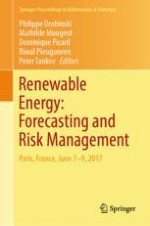Gathering selected, revised and extended contributions from the conference ‘Forecasting and Risk Management for Renewable Energy FOREWER’, which took place in Paris in June 2017, this book focuses on the applications of statistics to the risk management and forecasting problems arising in the renewable energy industry. The different contributions explore all aspects of the energy production chain: forecasting and probabilistic modelling of renewable resources, including probabilistic forecasting approaches; modelling and forecasting of wind and solar power production; prediction of electricity demand; optimal operation of microgrids involving renewable production; and finally the effect of renewable production on electricity market prices. Written by experts in statistics, probability, risk management, economics and electrical engineering, this multidisciplinary volume will serve as a reference on renewable energy risk management and at the same time as a source of inspiration for statisticians and probabilists aiming to work on energy-related problems.
